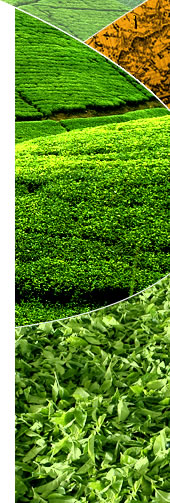| |
 |
THE ANCIENT HERB ANISE & ITS TASTE RELATIVES
By Barry P.W. Cooper
I grew up in Kenya, a land devoid of foxes but heavily populated with the type of Englishmen who loved to ride to hounds. This was a bit pointless if you had nothing to chase. However, little comes between the English and their sport, so the drag hunt was invented. This involved filling a Hessian sack with crushed anise and dragging it across a series of muddy fields. Shortly afterwards the hounds were released to go rushing off after the scent closely followed by the men and women in pink. The unspeakable chasing, in this case, the eatable. Such was my first incongruous introduction to the wonderful, ancient herb anise.
 To those not exposed to a drag hunt, who has not become enmeshed in the sticky luxury of a long string of licorice? Remember the tart, sharp taste? Well that is the character of anise, a star in the world of herbs!
To those not exposed to a drag hunt, who has not become enmeshed in the sticky luxury of a long string of licorice? Remember the tart, sharp taste? Well that is the character of anise, a star in the world of herbs!
The ancient Romans widely cultivated anise for its fragrance, flavor and medicinal properties. It was considered so valuable that the local tax collector would accept pounds of the stuff in place of coin. However, it is known in the food industry as a "polarizing character" meaning it is either loved or hated, there is no middle ground.
Anise, or to call it by its correct name, Pimpinella Anisum Umbelliferae, has been used by humans in a wide variety of roles, not the least being its reputation as an aphrodisiac. In the sixth century B.C., Pythagoras, the mathematician and philosopher, spent some time contemplating the use of anise. He believed that simply holding this herb could prevent seizures in epileptics. (No wonder he is best known as a mathematician.) One century later, Hippocrates prescribed a more reasonable use for anise and recommended it for coughs.
It is actually the seeds that are harvested from the small plants which grow to be only 30 to 40 cm tall. The seeds can be crushed for teas or used intact for extraction.
As well as humans and dogs, mice find anise irresistible and in the sixteenth century, anise was used with great success as mousetrap bait. However, it is as a food and a medicine that anise found its true home, and as we enter the age of nutraceauticals, this ancient herb is proving to be ever more popular.
Because of its Roman past, anise is presumed to be native in the eastern Mediterranean region and western Asia. It is now cultivated in China, Southern Europe, the Middle East, India, the former USSR, Mexico, Turkey, Egypt and Spain.
In folk medicine, it is still used as an aphrodisiac and aniseed oil is immediately identifiable as the main flavor base of such drinks as Ouzo (Greek aniseed spirits), Pastis and Anisette (French aniseed drinks). It is also used as ingredient in Benedictine and Boonekamp, two very fine liquors.
In the world of Herbal preparations, anise is very popular in Germany. It is the constituent of numerous cough remedies, carminatives and laxatives and is used in pediatric practice being served as a tea.
In normal, non-medicinal herb teas, anise is seen in limited amounts as it is more expensive than the ubiquitous fennel. Both have a licorice note but whereas Fennel costs $1.40 a pound in tea bag cut form, the superior anise goes for around $2.50 per pound and meets the cost cutters knife when suggested by an eager herb blender. This is a shame as anise has its own distinct richness and bite that fennel does not posses.
Its true close cousin in taste is the star anise, or Illicium Verum. This is the fruit from a small evergreen tree native to China and one look at this herb and you know why it got its name. It is shaped like a star and the fruit contains an essential oil that has very similar properties to anise oil and commercially it is often used as a substitute for anise.
The tree can grow to a height of 30 feet. It is very common in Vietnam and the Yunnan province of China. It is a slow grower and only produces fruit after 15 years in the ground. However, it makes up for this by then yielding three harvests a year. The taste is very similar to Anise but slightly more bitter.
Anise, fennel and star anise all yield a certain degree of licorice taste and we have not even mentioned licorice root, but that is another story for another day.
![]()

|
|